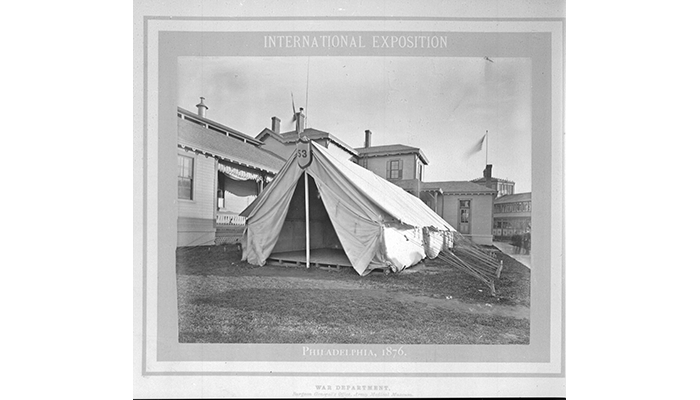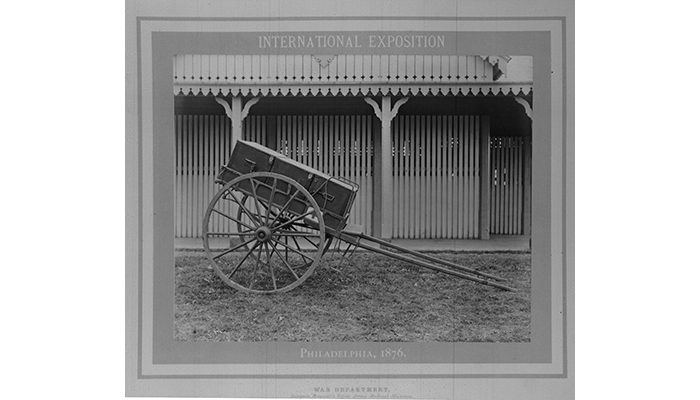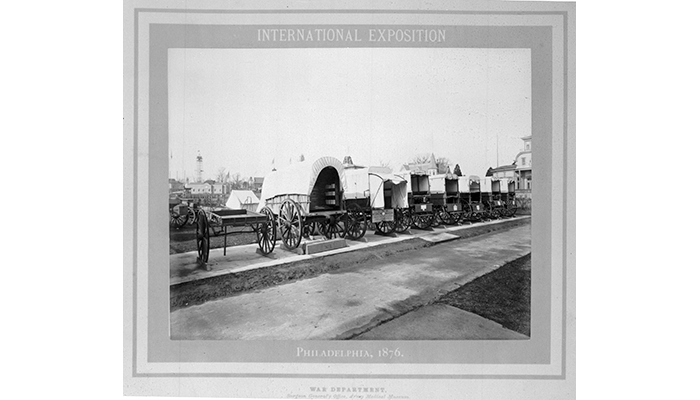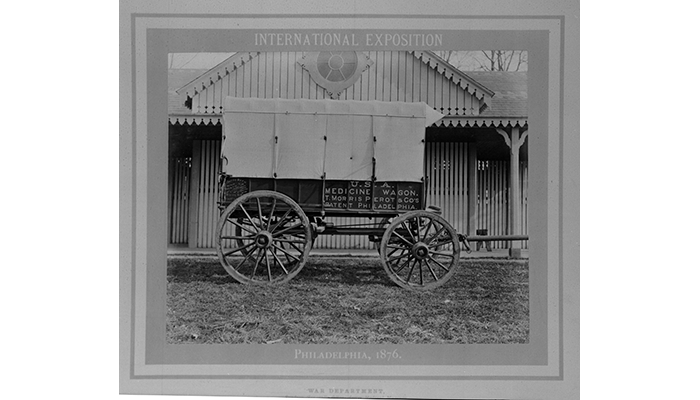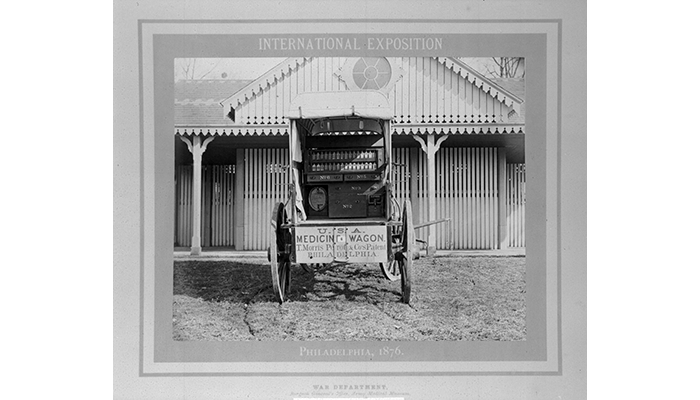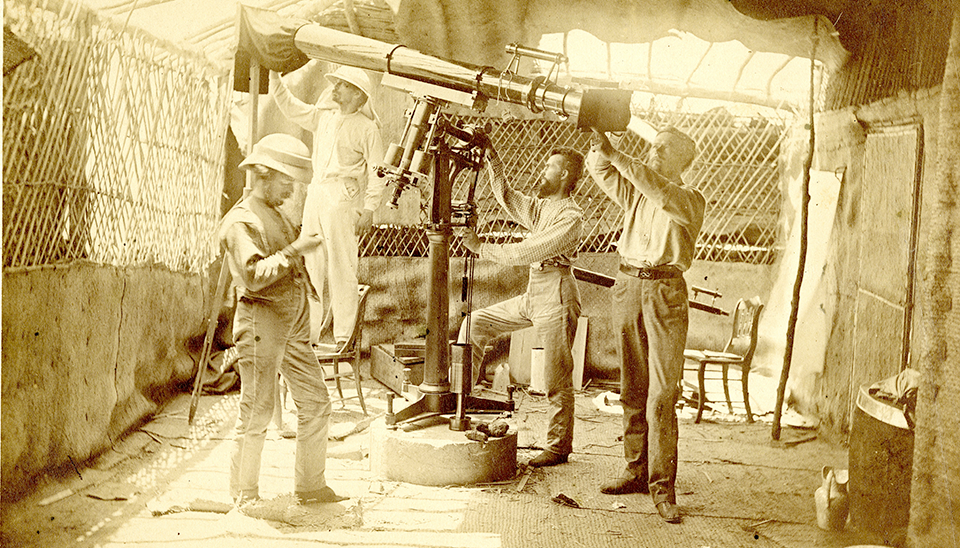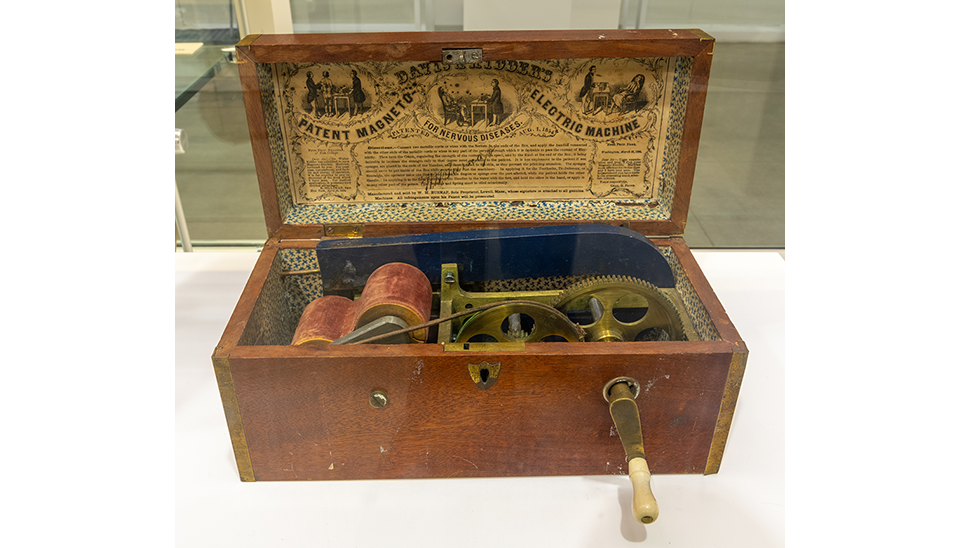From May 10 to November 10, 1876 almost 10 million people from the United States and abroad assembled in Philadelphia, Pennsylvania to experience an exposition of an estimated 30,000 exhibitions. Officially titled the "International Exhibition of Arts, Manufactures and Products of the Soil and Mine," the United States' first international exposition and world's fair was more commonly known as the "Centennial International Exhibition" to honor the signing of the Declaration of Independence 100 years prior.
Still reeling from the social tensions of the Civil War, the exhibition was "an opportunity to show an old-fashioned patriotism…in bringing together our brothers who were our most terrible enemies a few years ago," according to Gen. Joseph R. Hawley, the exposition president. While the exhibition sought to calm tensions among the public, it also showcased the national and professional achievements of the United States. Most importantly, the 1876 Centennial Exhibition was a global stage to demonstrate the advances in health and medicine that were developed by the U.S. military.
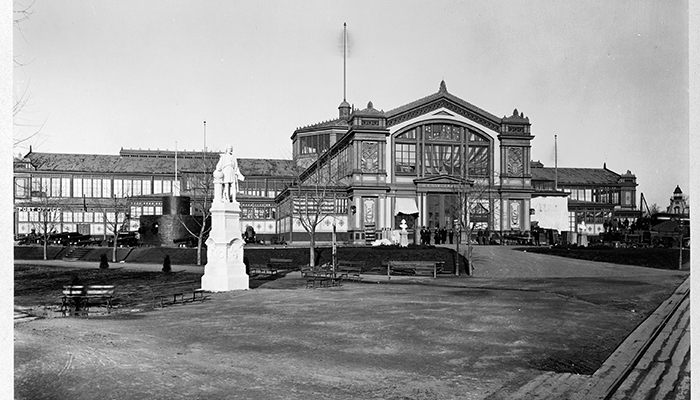
United States government building at the 1876 Centennial International Exhibition in Philadelphia. Smithsonian exhibit was housed inside. The Smithsonian coordinated all of the U.S. government exhibits and prepared a display on its activities and collections for the exposition. (Image courtesy of Smithsonian Institution.)
From the Civil War until the exhibit, military medicine evolved to include the general protection of the nation's health. New technologies and innovations in healthcare, sanitation, and medicine stemmed from military medical programs that were originally developed to help service personnel. In the exposition's government building, military exhibitors were given the opportunity to showcase the value of their efforts in the fields of science and medicine that were made possible by taxpayer dollars.
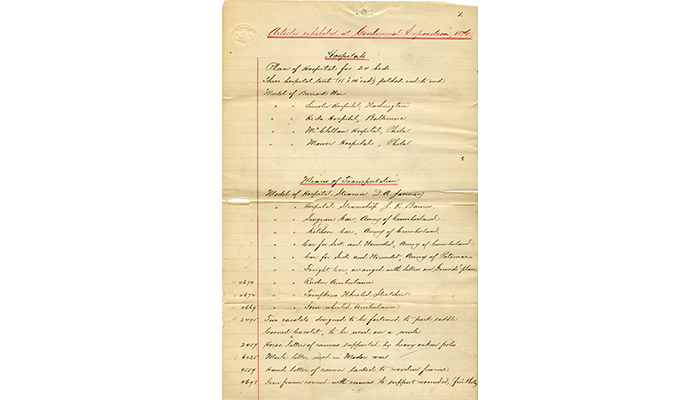
Centennial Expenditures 1876. Articles exhibited at Centennial International Exposition, 1876. Page 1. (OHA12-001-00001-2)
The Army Medical Museum (precursor to the National Museum of Health and Medicine) participated in the exposition under the direction of Lt. Col. Joseph Janvier Woodward, Assistant Surgeon General and head of Medical and Microscopic Sections. Woodward prepared a list of items to exhibit, and the museum even built a replica 24-bed military hospital next to the government building. Army Surgeon General Joseph K. Barnes noted that the replica would "serve to represent the system of hospital constructions which our experience has shown to be the best."
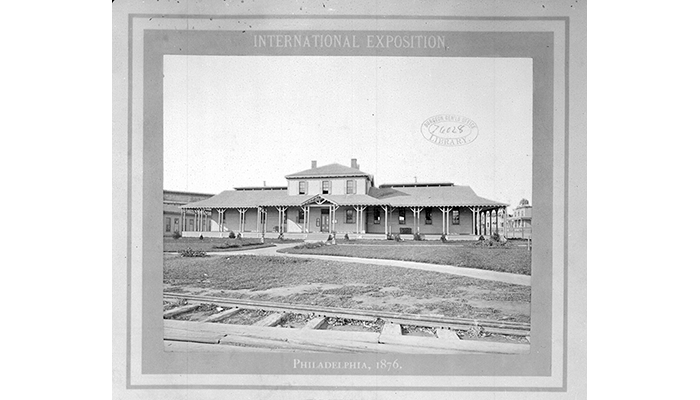
Other exterior displays included three pitched hospital tents, different modes of transportation including stretchers, litters, and examples of medicine wagons like the highly popularized Perot pattern (see above photo gallery). While the exterior displays were visually stimulating, the interior displays held particularly interesting materials that drew a large number of physicians and surgeons that wished to gain insight on the developing technology of health and medicine.
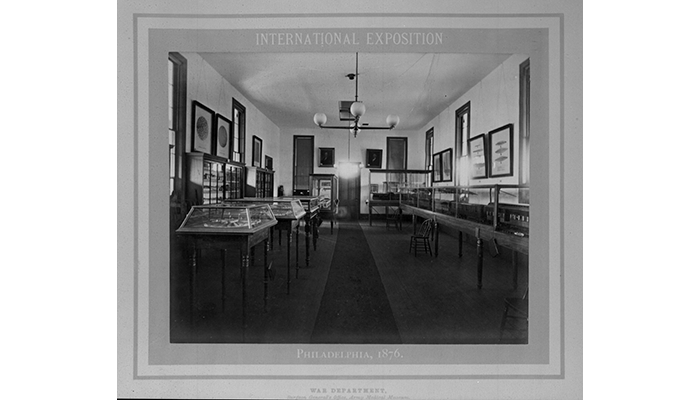
Interior of the replica U.S. Army Medical Department hospital, Room No. 2, showing displays of model cars, steamers, and hospitals. (OHA76-001-07)
In the interior displays, the AMM showcased architectural models of hospitals and steamers, surgical and medical instruments and appliances, pathological specimens, surgical photographs, and the pioneering technology of photomicrographs. Woodward himself put together an album of microscopic preparations and reproductions of photomicrographs. He placed the glass transparencies of the photomicrographs in the windowpanes of the replica hospital to be illuminated by sunlight.
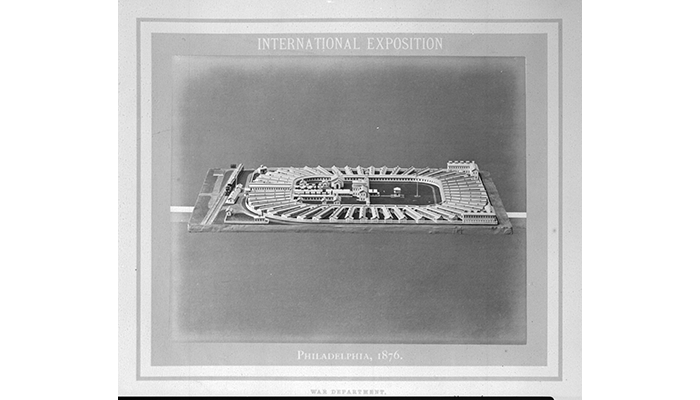
Block model of Mower Hospital, Philadelphia, Pennsylvania displayed at the 1876 Centennial International Exhibition in Philadelphia. (OHA76-001-16)
A late addition to the interior was a large 10-foot painting from Jefferson Medical College at Thomas Jefferson University called "The Gross Clinic" by artist Thomas Eakins. Originally, the painting was displayed in the Fine Arts Section of the Centennial Exhibition. However, due to the graphic nature of the subject matter, a surgery removing dead bone from a patient's leg, the Centennial Committee decided to display it within a medical setting (see photo below). At the replica hospital, the subject matter wouldn't be considered offensive and visitors were less likely to faint, a common reaction when it was displayed in the Fine Arts Section.
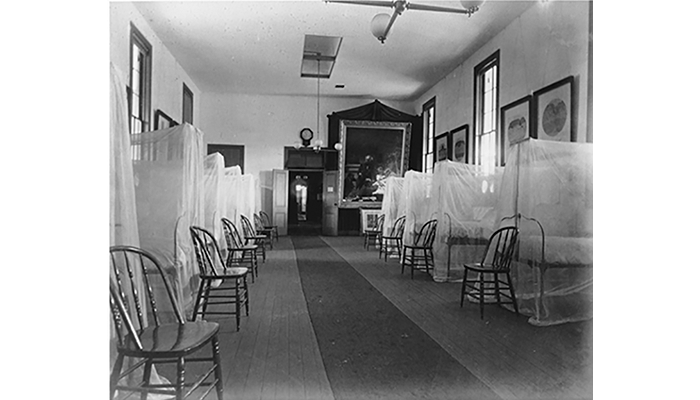
Interior of the replica U.S. Army Medical Department hospital, Ward No. 1, seen from the southern end. Thomas Eakins' controversial painting hangs in the back right corner, a late addition to the space. (OHA76-001-05)
Representing the best in medical innovations and the significant and specialized work done by AMM, the objects were described in 10 different printed pamphlets given to exhibition visitors as they left.
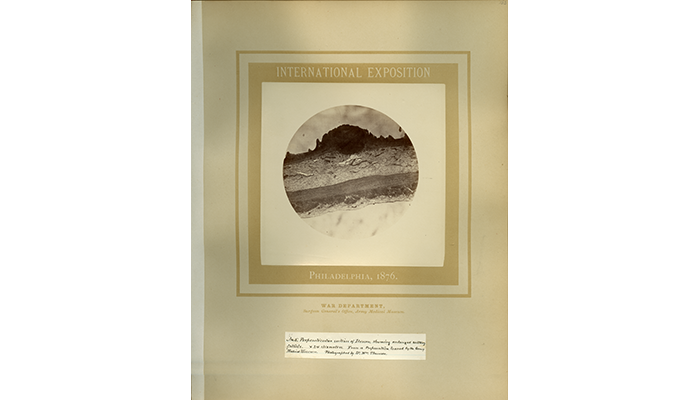
No. 5 perpendicular section of Ileum, showing enlarged solitary follicle. From a preparation loaned by the Army Medical Museum. Photographed by Dr. William Thomson. (OHA 12: Thomson 005)
As the public walked through the AMM exhibition, they experienced impressive three-dimensional displays and cutting-edge technologies in microscopy, medical equipment, and surgery. According to author Julie K. Brown, the AMM exhibit at the 1876 Centennial International Exposition was the "forefront of the professional advances in disease prevention, applied sanitation, and medical research."
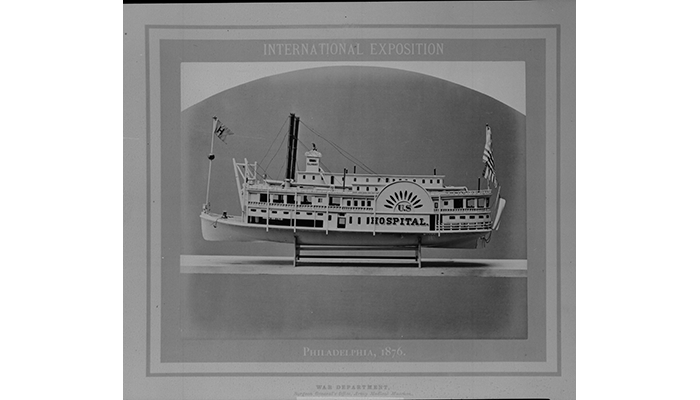
Model of the hospital steamboat D.A. January displayed at the 1876 Centennial International Exhibition in Philadelphia. (OHA76-001-23)
The museum still holds many of the items displayed at the 1876 Centennial International Exposition. A few of the objects, including the model of the hospital steamboat D.A. January, are currently on display.
Resources
Explore the Otis Historical Archives including some of the materials relating to the International Exposition of 1876:
International Exposition of 1876 Medical Department Photographs OHA 76
Brown, Julie K. Health and Medicine on Display: International Expositions in the United States, 1876-1904. MIT Press, 2009.
Brown, Julie K. Making Culture Visible: The Public Display of Photography at Fairs, Expositions and Exhibitions in the United States, 1847-1900. Harwood, 2001.
Lamb, Dr. D.S. A History of the United States Army Medical Museum, 1862-1917.
Relevant Links:
International Exhibition of 1876: Photographs Illustrating Rare Books in the National Medical Library
https://collections.nlm.nih.gov/catalog/nlm:nlmuid-0104443-mvset
Hospital of the Medical Department, United States Army: Description of the Models of Hospital Steam Vessels Exhibited in Room No. 2
https://collections.nlm.nih.gov/catalog/nlm:nlmuid-101214851-bk
Check List of Preparations and Objects in the Section of Human Anatomy of the United States Army Medical Museum: for Use during the International Exhibition of 1876, in Connection with the Representation of the Medical Department, U.S. Army
https://collections.nlm.nih.gov/catalog/nlm:nlmuid-101589481-bk
List of Skeletons and Crania in the Section of Comparative Anatomy of the United States Army Medical Museum: for Use during the International Exhibition of 1876 in Connection with the Representation of the Medical Department, U.S. Army
https://collections.nlm.nih.gov/catalog/nlm:nlmuid-101589004-bk



